In order to generate a more inclusive dataset of Pseudomonas genes mapped to putative in-paralogs and putative orthologs in other Pseudomonas species/strains, we developed a Pseudomonas Orthologous Groups classification system.
To generate ortholog groups, pair-wise DIAMOND searches were run on all genomes in the database to find reciprocal best hits (RBHs) for each gene. These analyses often resulted in multiple candidate genes for RBH status, which were narrowed down by examining the similarity between the query's flanking genes and the hit's flanking genes. If two candidate genes were directly adjacent, they where both accepted as RBHs that involve putative in-parology.
Pairwise intra-genome DIAMOND searches were also performed to acquire in-paralog information (i.e. gene duplications occurring after species divergence). If two genes in one genome were reciprocally more similar to each other than to any gene in the other genomes, the two genes were designated putative in-paralogs. Ortholog groups are built by starting with a seed gene and then adding all genes to which there is a RBH or in-paralog relationship.
Every new gene added to an ortholog group was then treated as a seed gene and the addition process was repeated until all qualifying genes had been added. The result was the development of orthologous groups, specifically generated for Pseudomonas species genomes, which can be used to sort search results.
Pseudomonas Ortholog Group POG000432
| Strain | Locus Tag | Description | Same-Strain Members | Fragment ? | |
|---|---|---|---|---|---|
| Pseudomonas sp. WCS374 | PD374_RS10830 |
phenylhydantoinase
|
2 same-strain members: PD374_RS10830 PD374_RS00200 |

|
|
| Pseudomonas sp. WCS374 | PD374_RS00200 |
dihydroorotase
|
2 same-strain members: PD374_RS10830 PD374_RS00200 |

|
|
| Pseudomonas stutzeri 28a24 | CH92_RS09340 |
dihydropyrimidinase
|
1 member |
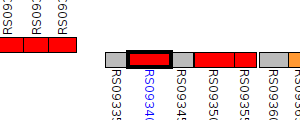
|
|
| Pseudomonas synxantha BG33R - Assembly GCF_000263715.2 | PseBG33_3448 |
phenylhydantoinase
hydA |
1 member |

|
|
| Pseudomonas taeanensis MS-3 - Assembly GCF_000498575.2 | TMS3_RS0101115 |
phenylhydantoinase
|
1 member |

|
|
| Pseudomonas taetrolens DSM 21104 | TU78_RS20020 |
phenylhydantoinase
|
1 member |
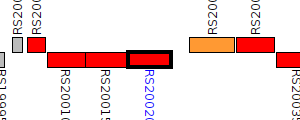
|
|
| Pseudomonas taiwanensis DSM 21245 | H620_RS0106945 |
phenylhydantoinase
|
1 member |
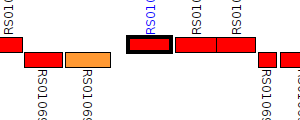
|
|
| Pseudomonas trivialis IHBB745 | AA957_RS04035 |
phenylhydantoinase
|
2 same-strain members: AA957_RS04035 AA957_RS14635 |
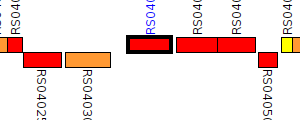
|
|
| Pseudomonas trivialis IHBB745 | AA957_RS14635 |
dihydroorotase
|
2 same-strain members: AA957_RS04035 AA957_RS14635 |

|
|
| Pseudomonas umsongensis 20MFCvi1.1 | D470_RS0113385 |
dihydroorotase
|
2 same-strain members: D470_RS0113385 D470_RS0126180 |
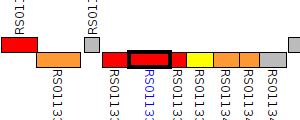
|
|
| Pseudomonas umsongensis 20MFCvi1.1 | D470_RS0126180 |
phenylhydantoinase
|
2 same-strain members: D470_RS0113385 D470_RS0126180 |

|
|
| Pseudomonas umsongensis UNC430CL58Col | N519_RS0116215 |
dihydroorotase
|
2 same-strain members: N519_RS0116215 N519_RS0120365 |

|
|
| Pseudomonas umsongensis UNC430CL58Col | N519_RS0120365 |
phenylhydantoinase
|
2 same-strain members: N519_RS0116215 N519_RS0120365 |

|
|
| Pseudomonas veronii 1YdBTEX2 | H736_RS0116235 |
phenylhydantoinase
|
3 same-strain members: H736_RS0116235 H736_RS0126410 H736_RS0130645 |
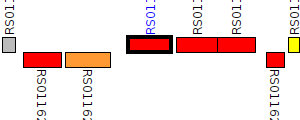
|
|
| Pseudomonas veronii 1YdBTEX2 | H736_RS0126410 |
phenylhydantoinase
|
3 same-strain members: H736_RS0116235 H736_RS0126410 H736_RS0130645 |

|
|
| Pseudomonas veronii 1YdBTEX2 | H736_RS0130645 |
dihydroorotase
|
3 same-strain members: H736_RS0116235 H736_RS0126410 H736_RS0130645 |
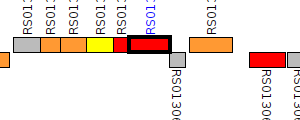
|
|
| Pseudomonas veronii R4 | SU91_RS00885 |
dihydroorotase
|
2 same-strain members: SU91_RS00885 SU91_RS11650 |
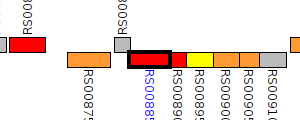
|
|
| Pseudomonas veronii R4 | SU91_RS11650 |
phenylhydantoinase
|
2 same-strain members: SU91_RS00885 SU91_RS11650 |

|
|
| Pseudomonas vranovensis DSM 16006 | H621_RS0125420 |
phenylhydantoinase
|
1 member |
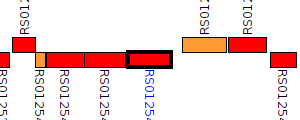
|